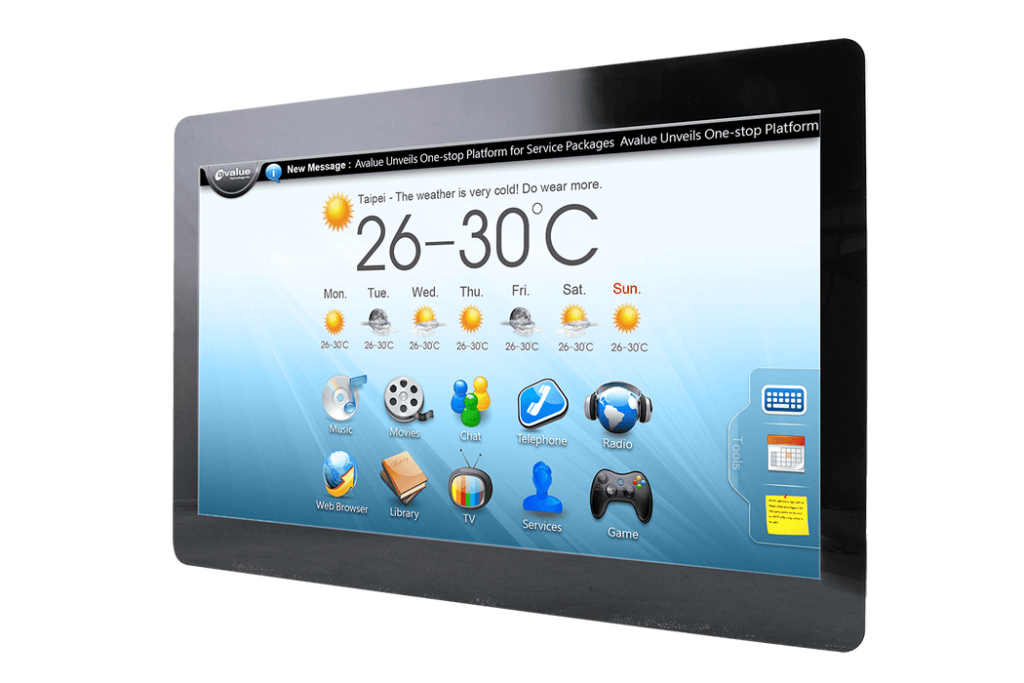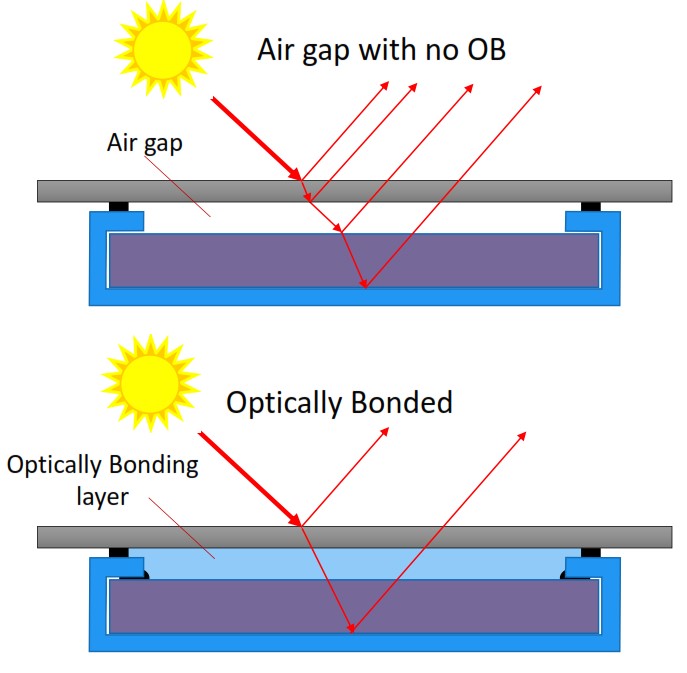+44 (0)1634 791600
info@crystal-display.com
Newsletter Sign Up!
+44 (0)1634 791600
info@crystal-display.com




At Crystal Display Systems, we understand that improving optical clarity, durability, and efficiency is crucial in TFT display technology. Optical bonding is a key innovation that addresses common design challenges, enabling displays to perform optimally in demanding environments, from industrial and medical settings to outdoor and defence applications. As optoelectronics continue to evolve, optical bonding remains essential for the next generation of high-performance displays.
Optical bonding involves filling the gap between the display and its protective cover glass with an optically clear adhesive (OCA). This process addresses key challenges such as glare, durability, and operational efficiency by reducing internal reflections, increasing structural integrity, and enhancing visibility.
Basic Principles of TFT Displays
TFT displays are advanced optoelectronic devices composed of three primary layers:
Key performance factors include:
Despite their versatility, TFT displays may face performance limitations due to environmental conditions and suboptimal assembly. Common issues include:

Optical bonding enhances the interaction between light and electronics, optimizing TFT display performance in several ways:
When incorporating optical bonding into TFT displays, engineers should evaluate:
Interactive Kiosks Benefit From Optical Bonding
Optical bonding is invaluable in applications that require consistently high display performance:
By improving optical clarity, durability, and efficiency, optical bonding is a key innovation in TFT display technology. Addressing common design challenges, it enables displays to perform optimally in demanding environments, from industrial and medical settings to outdoor and defence applications. As optoelectronics continue to evolve, optical bonding remains essential for the next generation of high-performance displays.